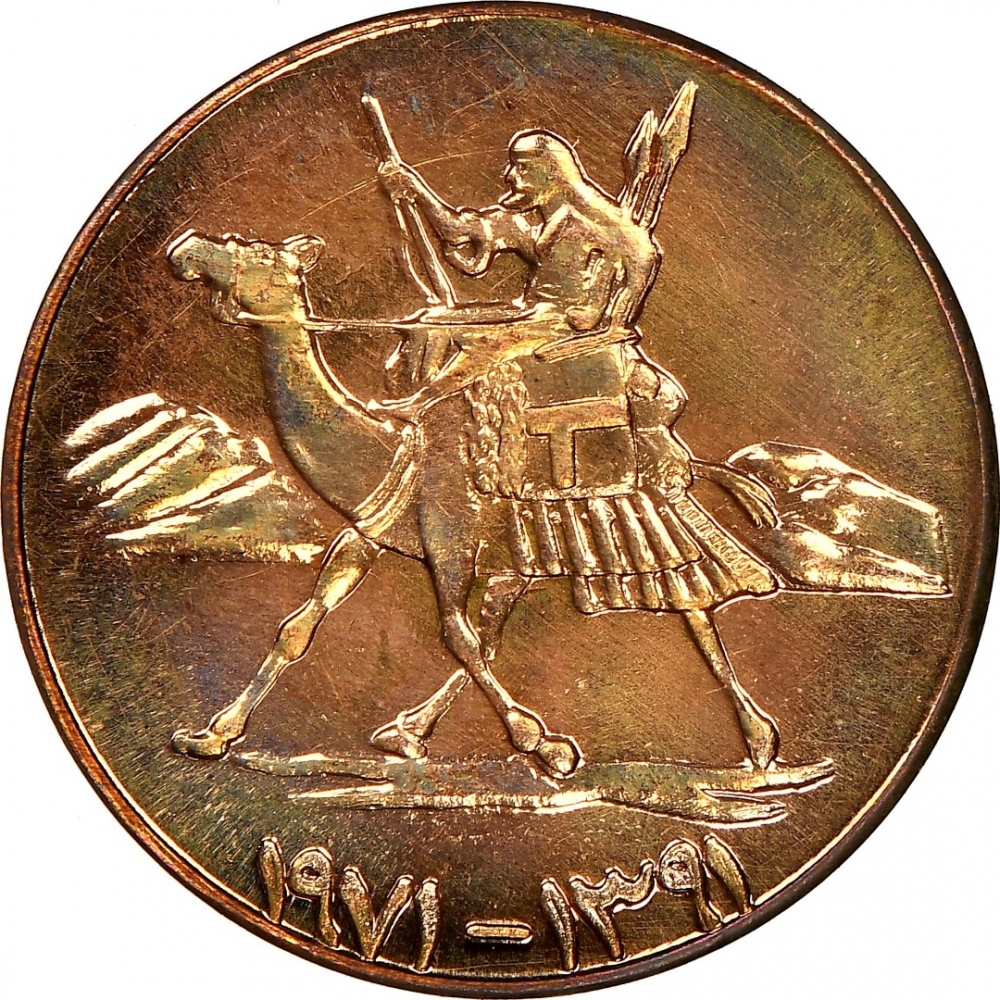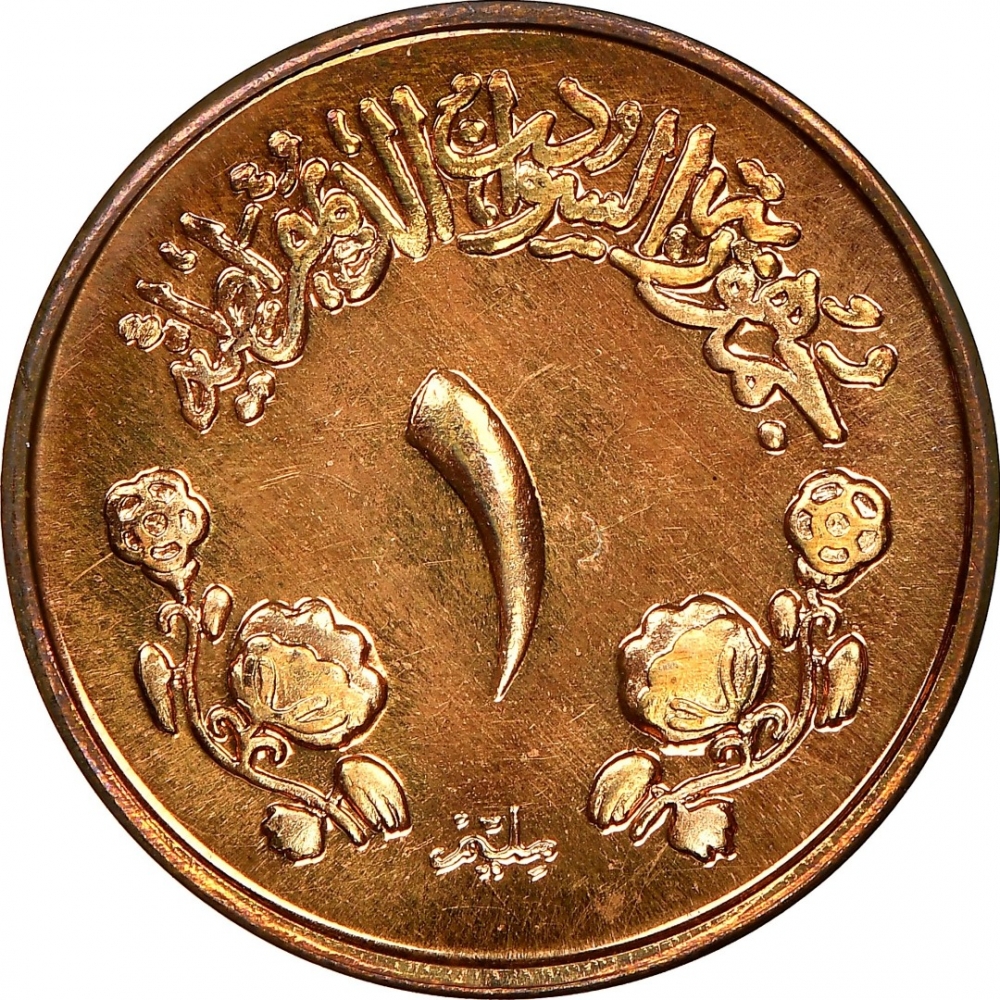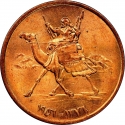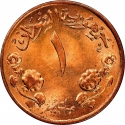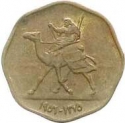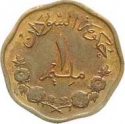You are about to finish your registration. Please check your mailbox (including spam folder). There should be a letter with a confirmation link. Check setting to make sure that your e-mail address is correct.
Send letter again
Obverse

|
Depicts a camel postman image from the famous post stamp above dates in Gregorian (left) and Islamic year (right) in Arabic numerals. ١٣٩١ - ١٩٧١ |
|---|---|
Reverse

|
Denomination between mirrored flower and cotton ornaments, country name above (Democratic Republic of the Sudan). جمهورية السودان الديمقراطية |
| Edge |
